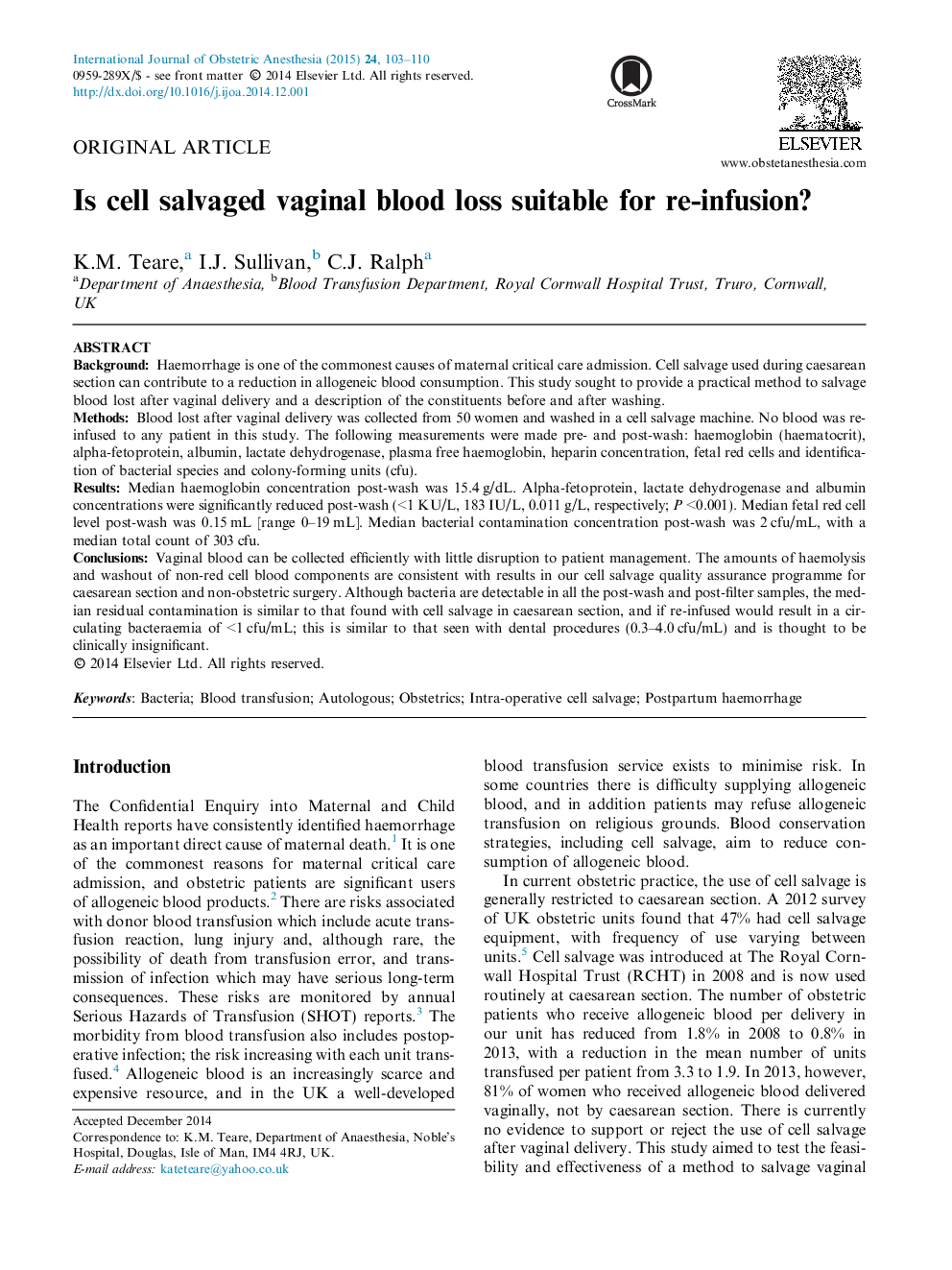| Article ID | Journal | Published Year | Pages | File Type |
|---|---|---|---|---|
| 2757578 | International Journal of Obstetric Anesthesia | 2015 | 8 Pages |
•We conducted a feasibility study of cell salvage at vaginal delivery.•The study describes the constituents of salvaged blood after washing.•Blood collection was simple and effective.•Fetal red cells were not removed, consistent with use at caesarean section.•Bacteria were detectable after washing, with similar quantities and species to that at caesarean section.
BackgroundHaemorrhage is one of the commonest causes of maternal critical care admission. Cell salvage used during caesarean section can contribute to a reduction in allogeneic blood consumption. This study sought to provide a practical method to salvage blood lost after vaginal delivery and a description of the constituents before and after washing.MethodsBlood lost after vaginal delivery was collected from 50 women and washed in a cell salvage machine. No blood was re-infused to any patient in this study. The following measurements were made pre- and post-wash: haemoglobin (haematocrit), alpha-fetoprotein, albumin, lactate dehydrogenase, plasma free haemoglobin, heparin concentration, fetal red cells and identification of bacterial species and colony-forming units (cfu).ResultsMedian haemoglobin concentration post-wash was 15.4 g/dL. Alpha-fetoprotein, lactate dehydrogenase and albumin concentrations were significantly reduced post-wash (<1 KU/L, 183 IU/L, 0.011 g/L, respectively; P <0.001). Median fetal red cell level post-wash was 0.15 mL [range 0–19 mL]. Median bacterial contamination concentration post-wash was 2 cfu/mL, with a median total count of 303 cfu.ConclusionsVaginal blood can be collected efficiently with little disruption to patient management. The amounts of haemolysis and washout of non-red cell blood components are consistent with results in our cell salvage quality assurance programme for caesarean section and non-obstetric surgery. Although bacteria are detectable in all the post-wash and post-filter samples, the median residual contamination is similar to that found with cell salvage in caesarean section, and if re-infused would result in a circulating bacteraemia of <1 cfu/mL; this is similar to that seen with dental procedures (0.3–4.0 cfu/mL) and is thought to be clinically insignificant.
